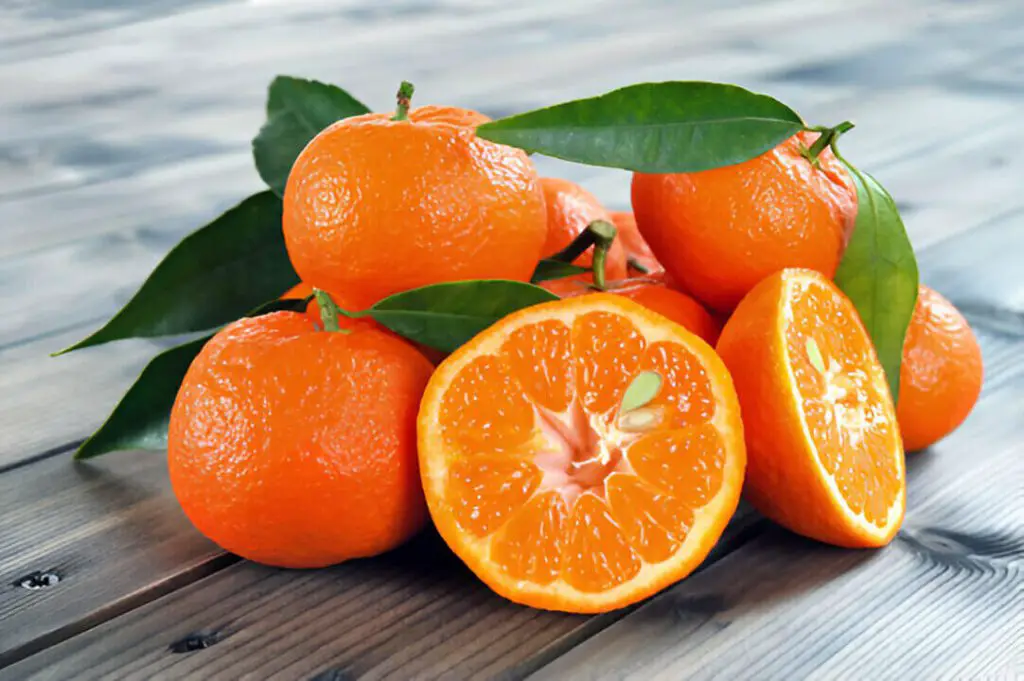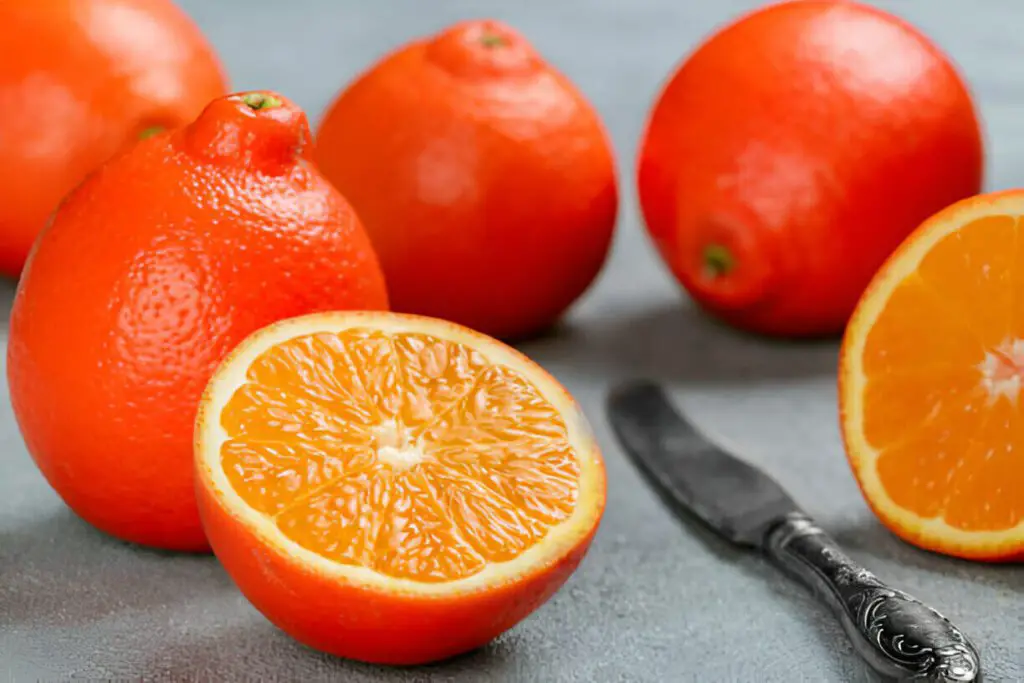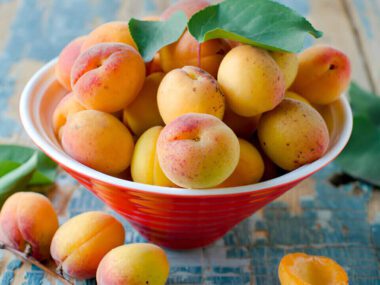You know what’s the hardest part of winter? Picking out citrus fruits at the store! With all those tiny oranges and weirdly shaped hybrids, it can be impossible to tell what you’re actually buying. Are those mini-oranges going to be sweet or sour? And don’t even get me started on those strange bell-shaped guys—what even are those things?
I was in that exact situation last week, staring perplexedly at the citrus display, when I noticed two varieties that always have me scratching my head: Clementines and Minneolas. They look so similar with their little orange spheres, but I swear every time I’ve tried them, they taste completely different. So which one should you pick up for a sweet winter snack?
That’s what I’m here to clear up for you today. As your trusty citrus consultant, I did some digging into Clementine Vs. Minneola to understand their origins and key differences. By the end of this article, you’ll know exactly what distinguishes these hybrid fruits and be able to pick out the perfect one for your tastes.
What Are Minneolas?

Now these little guys have always puzzled me with their strange bell-like shape. Where exactly did they come from, and what’s their deal?
As it turns out, Minneolas aren’t your average orange. They’re actually a hybrid citrus fruit, the result of crossing a tangerine with a grapefruit. Yep, can you believe it? Part tangerine, part grapefruit! That right there explains their one-of-a-kind profile.
On the outside, Minneolas have some really unique physical characteristics. First of all, they’re unmistakable in shape—think of a little orange bell with a bulbous bottom that tapers up to a pointier top.It’s almost like a genie’s lamp or one of those mushroom power-ups in Super Mario Bros. Their peel is smooth and glossy too, usually in a bright orange color that really pops on the tree.
Size-wise, Minneolas tend to be on the smaller to medium side. I’d say they average around 2–3 inches in diameter. Personally, I think their smaller stature is part of their charm. It’s like biting into a cute little orange-flavored candy. And despite their diminutive dimensions, minneolas are surprisingly juicy and packed with fruit.
Now let’s get to the really important part: how these weird little bells taste. As you might expect from their lineage, Minneolas have a really unique flavor profile, combining traits of their tangerine and grapefruit ancestors. They’re definitely on the sweet side upfront, with a nice burst of tangy, almost floral citrus. But there’s also a subtle undercurrent of grapefruit tartness that balances out the sweetness perfectly. It’s like sweet and tart dancing together on your taste buds—really refreshing!
What Are Clementines?

These little cuties may look similar to Minneolas at first glance, but let me tell you, their story is quite different.
While Minneolas have grapefruit in their lineage, Clementines are all about the mandarin oranges. Specifically, they were born from a cross between a sweet orange and a willowleaf mandarin. Right off the bat, that tells me their flavor profile will be on the sweeter side compared to Minneola’s balance of sweet and tart. But we’ll get to tasting them soon enough.
Appearance-wise, Clementines are unmistakably round and smooth. Think of a perfect little orange sphere—that’s the classic Clementine shape. Their peel is also glossy and bright, usually a vibrant dark orange color. Size-wise, they tend to be on the smaller side, averaging 2–3 inches like Minneolas. But their shape is noticeably more circular compared to Minneola’s bell-like form.
Now here’s an interesting tidbit: unlike Minneolas, Clementines are completely seedless! How cool is that? No picking tiny seeds out of your teeth. Just pure citrus heaven in every bite. I guess you could say evolution made Clementines as carefree to enjoy as possible. No seeds also means their flesh is extra juicy and soft.
Alright, finally,let’s get to their taste. As expected from their mandarin parentage, Clementines are an explosion of sweet citrus flavor. There’s a real candy-like quality to them, with bold bursts of orange and a subtle honeyed undertone. They’re incredibly refreshing to eat too. While Minneolas have that balancing grapefruit tang, Clementines go full throttle on unbridled sweetness. It’s like biting into a burst of pure sunshine on a winter day.
Clementine Vs. Minneola: What’s The Difference?
Shape

As we’ve discussed, this is one way you can tell a Clementine from a Minneola just by looking. So let’s break down the differences in detail.
We’ll start with Minneola shape. As I’m sure you’ve gathered by now, Minneolas have a very unique bell-like form. The best way I can describe it is like a little orange mushroom or genie’s lamp. They bulge out at the bottom, near the stem end, into a rounder shape. Then the sides taper up smoothly until narrowing to a pointed tip at the top. It gives them an almost cartoonish silhouette.
Their shape is also not perfectly symmetrical. Sometimes one side may bulge more than the other or the tip isn’t perfectly pointed. This asymmetry is part of their charm, in my opinion. It makes each Minneola feel one-of-a-kind rather than just a plain sphere. Their shape has almost a whimsical quality to it that sets them apart from other citrus.
Now, in contrast, darling Clementines are the picture of symmetry and smoothness. Their shape is a flawless spher— perfectly round from every angle. There’s no bulging or tapering, just beautiful curvature. When you roll a Clementine around in your hand, it maintains an ideal circular shape no matter which way it faces. You really couldn’t ask for a more aesthetically pleasing orb!
Flavor
As we know from their parentage, Minneolas and Clementines each have their own signature taste. Let’s break down their flavor profiles in detail.
We’ll start with Minneolas. As a cross between tangerine and grapefruit, they have a really unique blend of sweetness and tanginess. Upfront, you get a nice burst of sweet citrus flavor—almost like a bold orange cream. It’s candied without being too cloying.
But that’s where the Clementines stop—the Minneolas keep things interesting with their secondary notes. Lingering in the background is a subtle tartness with a lovely floral twist. It’s like biting into an orange blossom. The tartness prevents the sweetness from overwhelming, balancing it perfectly on the palate.
It gives Minneolas such a refreshing complexity that keeps you coming back for more. Each bite reveals new layers of flavor. Their taste has an almost natural effervescence, like popping a crisp champagne of citrus.
Now, in comparison, darling Clementines go straight for the jugular with their sweetness bombs. There’s no tartness or secondary notes here—just unapologetic bursts of candied orange bliss. Think of biting into a creamsicle on a stick. It’s bold, bright sunshine in every mouthful.
While Minneolas charm with subtlety, Clementines delight with an in-your-face sweetness assault. They maximize the orange experience without distraction. So Minneolas offer intrigue and complexity, while Clementines simply please with pure, sweet satisfaction.
Culinary Uses

Both Minneolas and Clementines add loads of flavor, so don’t limit them to just snacking.
Let’s start with Minneolas. Their subtle sweet-tart balance makes them a great addition to savory dishes like sautéed chicken or fish. Just add some thinly sliced rounds during the last few minutes of cooking. Their bright color also makes them a beautiful garnish. Minneola zest is fantastic for livening up marinades, vinaigrettes, and salad dressings too.
Baking is another great use. Minneola juice adds a kiss of sunshine to quick breads and muffins. You can also mix their zest into buttercream frosting or lemon curd. Just be sure not to overpower—a little Minneola zest goes a long way. Their unique flavor also pairs lovely with heartier winter vegetables like carrots.
Now, darling Clementines really shine in sweet preparations. Their bold sweetness is perfect for tarts, pies, and pastries. Homemade marmalade is a classic, and Clementine glaze takes cake or donuts to the next level. Their sections also add a fun burst of flavor and color to fruit salads, yogurts, and overnight oats.
Nutritional Comparaison
For a medium Minneolas fruit (100g), they provide just 52 calories and are fat free. In terms of vitamins and minerals, minneolas are a great source of vitamin C, providing 53% of your daily needs per serving. They also contain modest amounts of thiamine, niacin, vitamin B6, folate, and pantothenic acid.
On the mineral side, minneolas provide 6% of your daily calcium and 2% each of iron and magnesium. Their unique grapefruit heritage means they also contain small amounts of antioxidants like vitamin A, flavonoids, and polyphenols. All in all, minneolas are a nutritious way to satisfy your citrus cravings.
Now, looking at Clementines, the nutrition is quite similar. A medium fruit (100g) also has 52 calories and no fat or cholesterol. They supply even more vitamin C at 69% DV per serving. Clementines contain comparable amounts of B vitamins like thiamine, niacin, and pantothenic acid too.
Where Clementines shine is their potassium content. One fruit provides 5% DV, which is important for blood pressure regulation and muscle function. They also contain slightly higher levels of antioxidants like vitamin A and flavonoids compared to minneolas.
FAQs
Are minneolas and clementines easy to peel?
Absolutely! Both varieties have very thin, smooth skins that are super easy to remove in one go without any messy membrane left behind. They’re perfect for peeling and snacking on-the-go.
Which one has more juice?
In my experience, Clementines tend to be juicier fruit for fruit. Their high sugar content results in plump, bursting sacs of sweet sunshine liquid. Minneolas have nice juice too but it’s not quite on the level of Clementines.
How do you eat them?
However you please—out of hand as a snack, in salads for a pop of color and flavor, or juiced for a vitamin C boost. You can also use the zest in baked goods, sautéed meats, or cocktails. They’re incredibly versatile little cuties!
Which stores them better?
Minneolas have a slight edge in storage lifespan, keeping fresher in the fridge for 1-2 weeks compared to 1 week for Clementines. Both will last longer if kept in a plastic bag with air holes.
Do they come in seasons?
Yes, both are winter citrus, available from November through March. Clementines may start a bit earlier, in late fall. Minneolas peak from January to February. Enjoy them while they’re fresh!
The Verdict
Alright friends, after this deep dive comparing Minneolas vs. Clementines, I think it’s time for the ultimate verdict! Both of these winter citrus cuties have so much to offer; it was truly a tough decision. But when it comes down to it, I have to crown a winner.
Let’s do a quick recap of the key factors:
Appearance – Minneolas win for their uniquely whimsical bell shape, while Clementines are perfect little spheres.
Flavor – Minneolas charm with their balanced sweet-tart profile. But Clementines simply delights the tastebuds with unapologetic sweetness.
Versatility – Both shine in recipes, with Minneolas excelling in savory and Clementines in sweets.
Nutrition – Clementines edge out Minneolas slightly with more vitamin C and potassium.
After careful consideration, I’ve come to the conclusion that darling Clementines just barely snag the citrus crown! Their flawless spherical shape, unbeatable sweetness make them a true winter delight. However, Minneolas put up an admirable fight with their quirky charm and balanced, nuanced flavor.
In the end, you truly can’t go wrong with either of these hybrid cuties. They’re both champions in my book! The real winners are our taste buds for getting to enjoy such refreshing sunshine all season long. Whether Minneola or Clementine, I hope you folks get to sink your teeth into plenty of these wintertime gems. Let me know which one ends up being your citrus crush!



